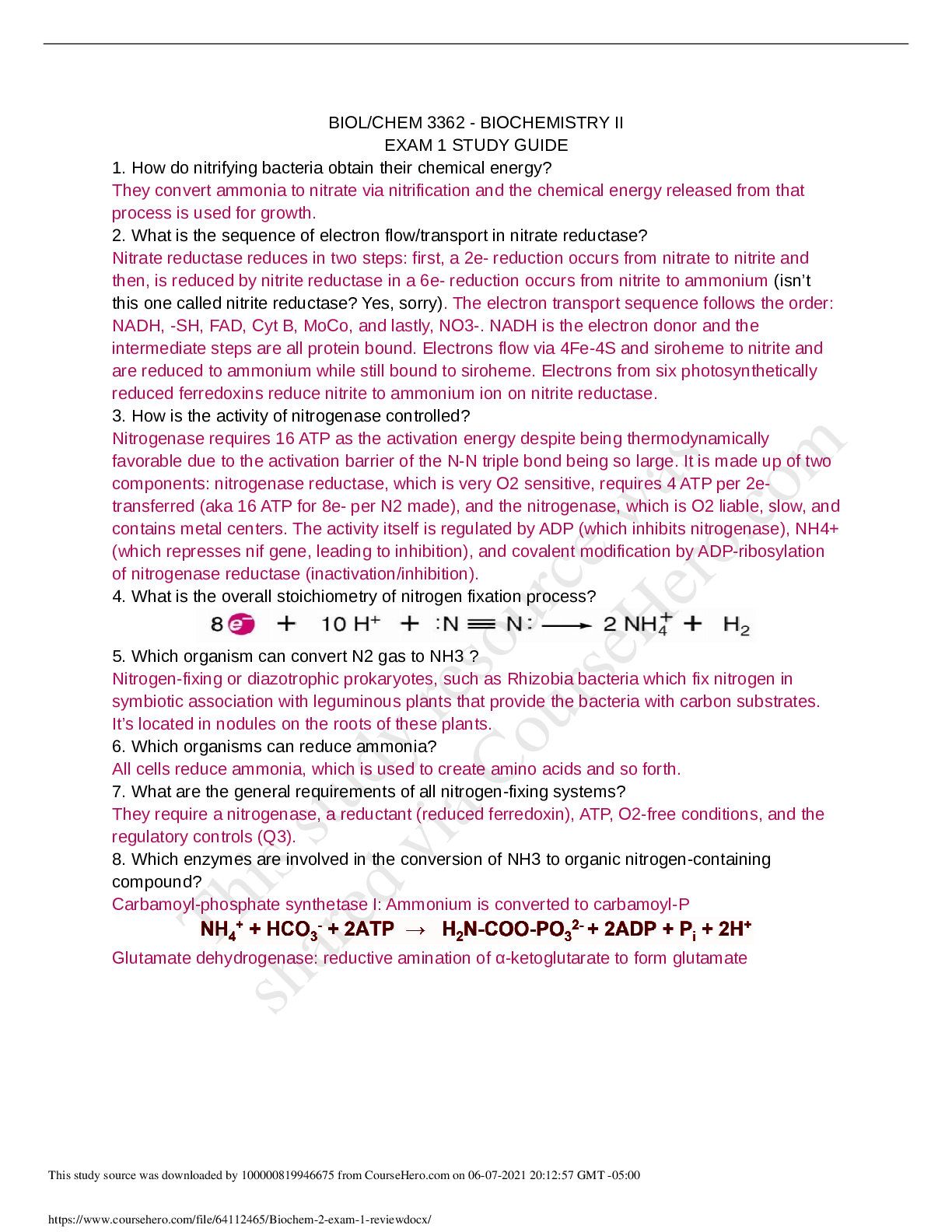Chemistry > STUDY GUIDE > The Atomic Structure of Atoms Best Study Guide Already Rated A (All)
The Atomic Structure of Atoms Best Study Guide Already Rated A
Document Content and Description Below
Fundamental Particles (5-1) • Atoms are comprised of three fundamental particles that were introduced in Chapter 1. Particle Symbol Mass (amu) Charge Electron e - 0.00054858 -1 Proton p or p... + 1.0073 +1 Neutron n 1.0087 0 3 Fundamental Particles (5-1) • Keep in mind that protons and neutrons are found in the nucleus of the atom. – They are responsible for the mass of the atom. • Electrons are found outside the nucleus of the atom. – Their mass is insignificant in comparison to protons and neutrons. – They add no measurable mass to the atom. 4 Discovery and History (5-2 through 5-4) • Many different scientists had a hand in the elucidation of the three fundamental atomic particles. – These three sections of your text outline these discoveries. – You are responsible for being able to identify images of the experiments and knowing who was responsible for specific discoveries. 5 Atomic Number (5-5) • The number of protons in an atom allows us to identify the atom. – The atomic number (Z) is the number of protons in an atom of an element. – All atoms of a given element have the same atomic number. • Every atom of carbon has an atomic number of 6. – The periodic table is arranged in order of increasing atomic number. • In a neutral atom the number of electrons is equal to the number of protons. 6 Mass Number and Isotopes (5-7) • The mass number (A) is the total number of protons PLUS neutrons in the nucleus of an atom. E A Z E A 7 Mass Number and Isotopes (5-7) • Isotopes are atoms of the same element (by definition, they have the same number of protons) that have different numbers of neutrons. Therefore, the have different mass numbers. C 12 6 C 14 6 8 Mass Number and Isotopes (5-7) • Because the atomic number of any element is readily available from the periodic table it is sometimes omitted from the symbol. C C 12 12 6 = 9 Mass Number and Isotopes (5-7) • Example: How many protons, neutrons, and electrons are in one atom of each of the following? U 238 92 P 32 + Na 23 11 16 2- O 10 Mass Number and Isotopes (5-7) • One example of an isotopic series is the hydrogen isotopes. 1H is the most common hydrogen isotope. • One proton and no neutrons 2H or deuterium is the second most abundant hydrogen isotope. • One proton and one neutron 3H or tritium is a radioactive hydrogen isotope. • One proton and two neutrons [Show More]
Last updated: 2 years ago
Preview 1 out of 104 pages

Buy this document to get the full access instantly
Instant Download Access after purchase
Buy NowInstant download
We Accept:

Reviews( 0 )
$14.00
Can't find what you want? Try our AI powered Search
Document information
Connected school, study & course
About the document
Uploaded On
Sep 03, 2021
Number of pages
104
Written in
Additional information
This document has been written for:
Uploaded
Sep 03, 2021
Downloads
0
Views
160




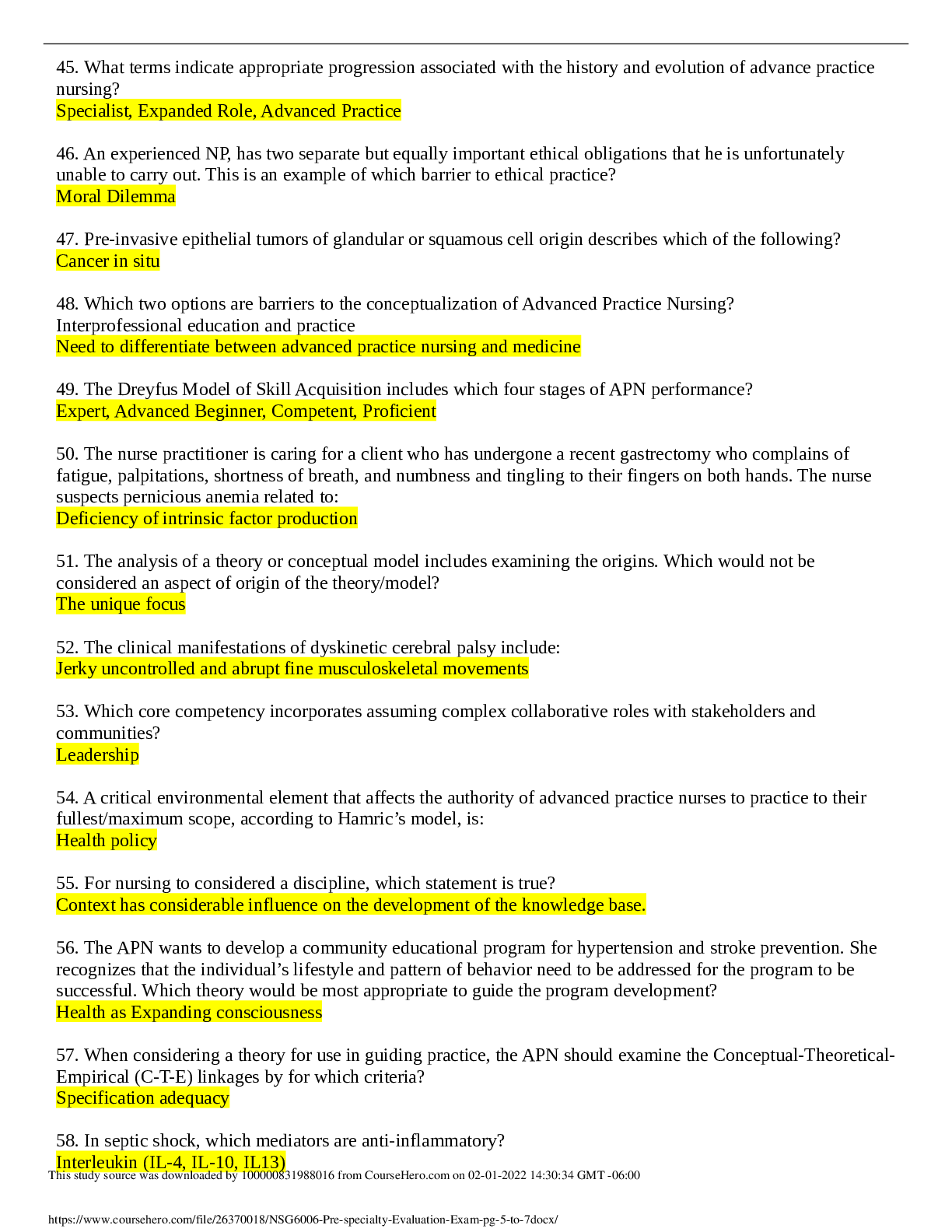



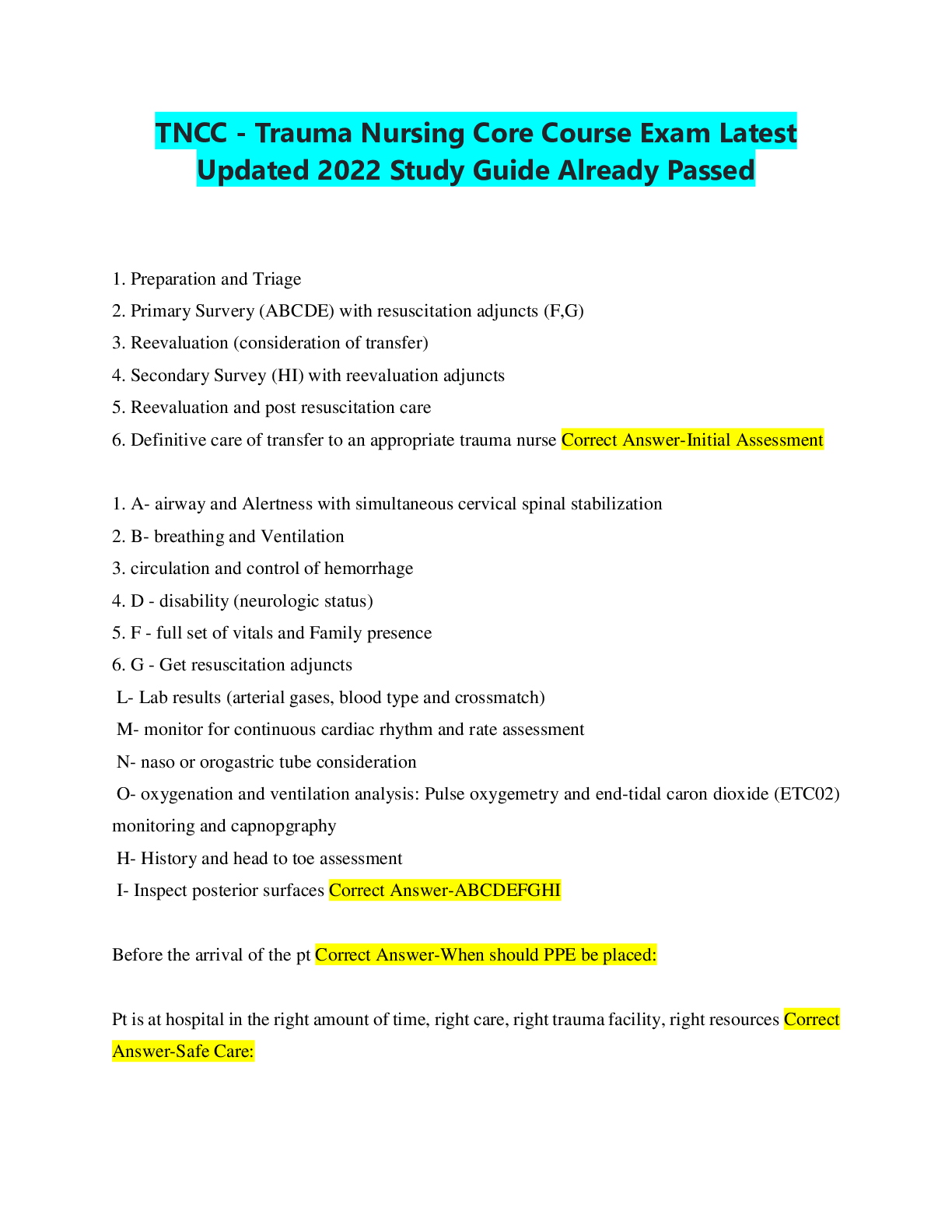
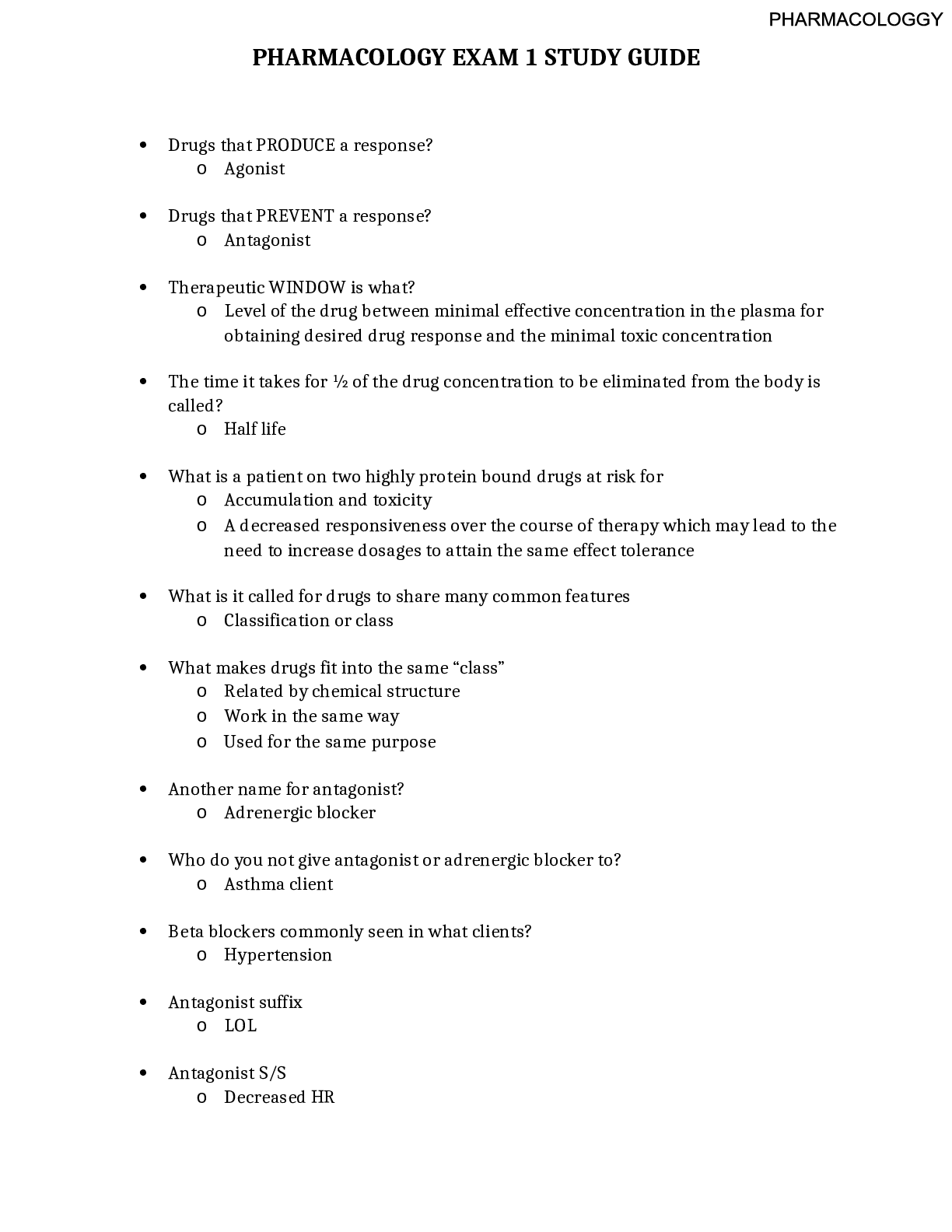

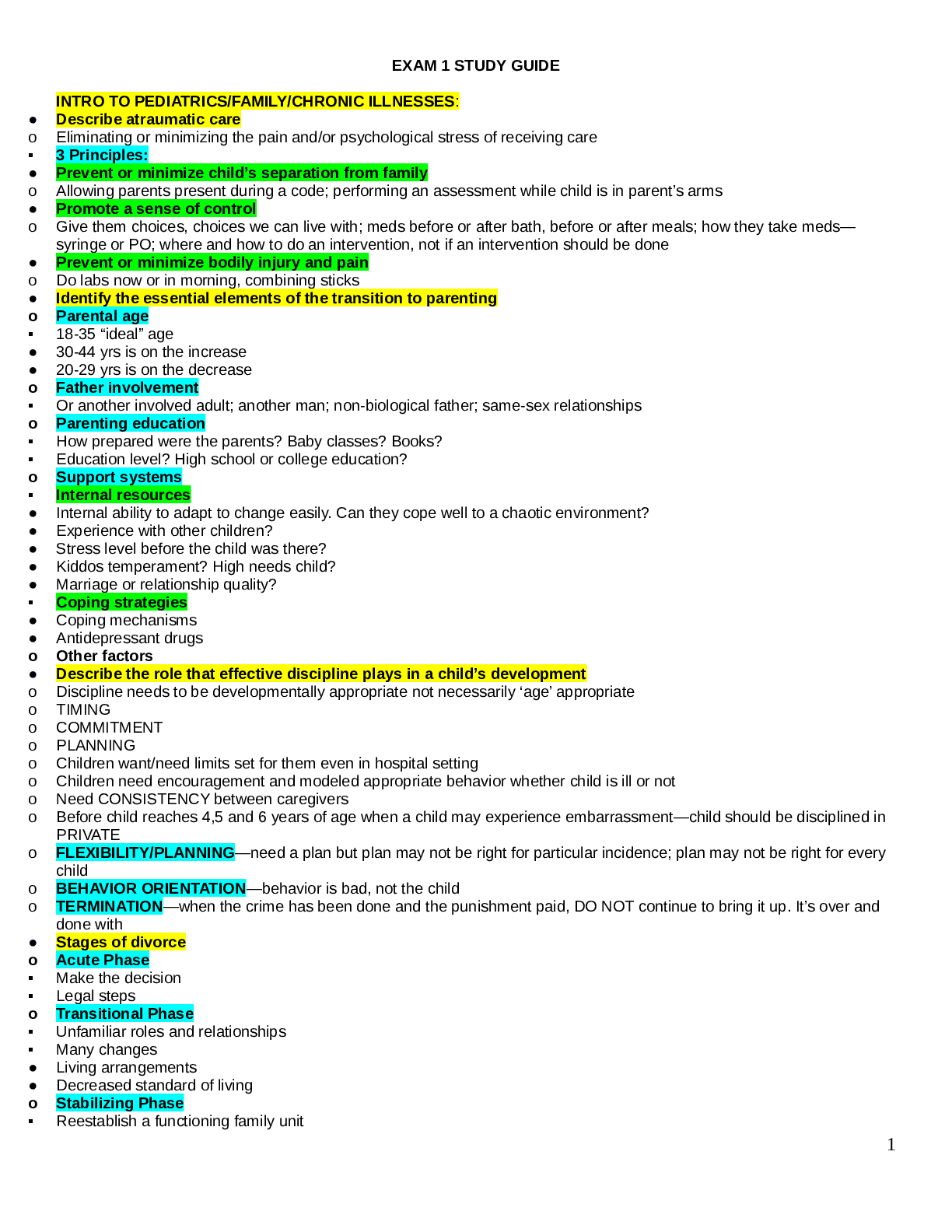
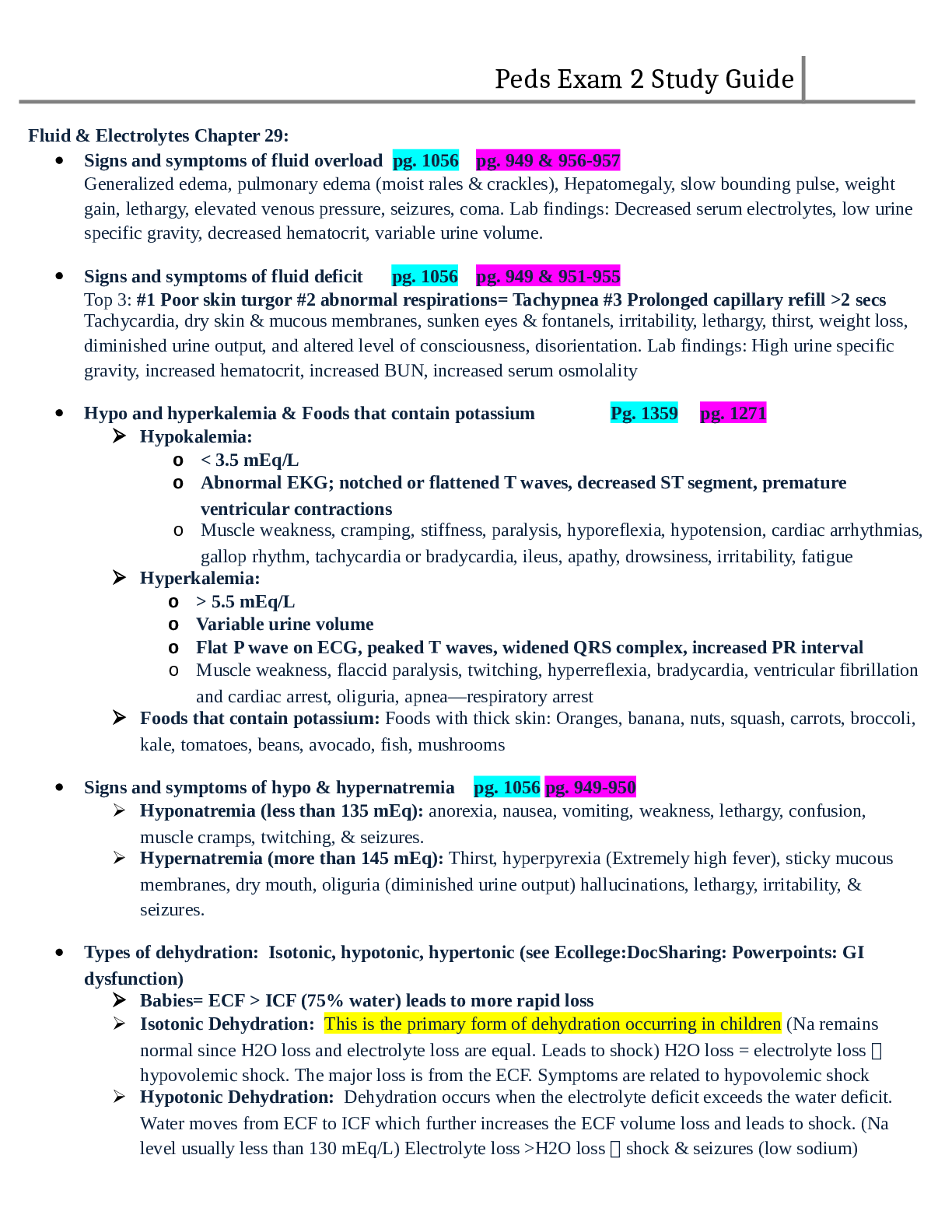





.png)
.png)



